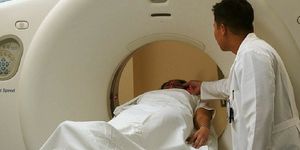Liver Disease Deaths Are Up in Young Adults
It’s a fact that overuse of alcohol can cause liver problems. Cirrhosis of the liver is often the result of long-term alcoholism, but a new study of the data shows that liver disease is increasing in young adults, a group not generally seen as at risk.
During the years 1999-2016 deaths from cirrhosis increased in 49 out of 50 states. The age group most affected were adults between the ages of 25-34.
When researchers at the University of Michigan began investigating liver disease deaths, the goal was to see what parts of the country were most impacted and if the disease was moving into different areas and age groups. Deaths from liver disease were expected to be down because of advances in anti-viral drugs that can cure a Hep C infection in most patients for whom traditional treatment did not work. What they found was unexpected, regarding age groups and deaths from liver damage. Looking at the data on a nationwide scale, Maryland was the only state where liver deaths had decreased. States like Kentucky, Alabama, Arkansas and New Mexico had the highest increases in deaths of alcohol-related liver disease. The age group with the most significant jump in cases were much younger than researchers expected.
Liver specialist Elliot B. Tapper, M.D., is an assistant professor at the University of Michigan and the co-author of the study. He also treats patients with liver disease Michigan Medicine’s Hepatology Clinic. He explained, "Each alcohol-related death means decades of lost life, broken families, and lost economic productivity. In addition, medical care of those dying from cirrhosis costs billions of dollars."
The data for the study came from more than 460,000 death records. Roughly one-third of the deaths from liver damage were caused by hepatocellular carcinoma, which can be caused by cirrhosis. The numbers for 2016 were more than 11,000 lives lost to liver disease, which is double the amount from 1999. The increase among young people who died from cirrhosis related conditions began in 2009. Tapper’s co-author, colleague Dr. Neehar Parikh, a liver specialist at the University of Michigan Medical School, told NPR in an interview, that the timing lines up with financial reversals and an economic downturn that also began around 2009. He stated, “It correlates with the global financial crisis. We hypothesize that there may be a loss of opportunity, and the psychological burden that comes with that may have driven some of those patients to abusive drinking."
The study from Michigan was not the only research to point out an increase in deaths from liver disease. The CDC reported that death rates for liver cancer (age adjusted) increased 43%, from 10.5 per 100,000 U.S. standard population to 15.0 for men and 40%, from 4.5 to 6.3 for women, between the years 2000 and 2016. Want to know more? See the video below.
Sources: Sources: University of Michigan Health British Medical Journal CDC NPR









